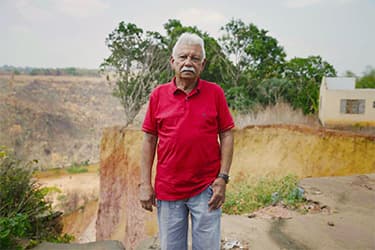Walter Youngquist (1921-2018) was a petroleum geologist, a University of Oregon professor, and my friend. His life’s masterpiece is a 600 page book that’s now available to everyone as a free PDF download [HERE].
Geologists study Earth resources, many of which are being degraded and depleted — aquifers, topsoil, hydrocarbons, minerals, etc. These resources have limits. Every drinker learns that the glass starts full, ends empty, and the faster you drink it, the quicker it’s gone. Consumers pay little attention to resource limits, but they’re beginning to comprehend the impact of carbon emissions on the climate. Mainstream experts repeatedly tell us not to worry. They preach a fervent blind faith in miracles — a smooth and easy transition to a clean, green, renewable utopia. Geologists wince.
Youngquist didn’t believe in miracles or techno utopias. Today, we’re living dangerously fast by destroying astonishing amounts of nonrenewable resources — a onetime binge that can never again be repeated. Nonrenewable energy is finite. We have been soaring in a beautiful dream world, where the air is perfumed with the intoxicating aroma of a nonrenewable prosperity. The era of cheap energy is fading away in the rear view mirror.
In 1973, the Eugene newspaper wrote a story about one of his lectures, “Dark Picture Painted by Youngquist.” He gave many talks to Chamber of Commerce groups, trying to introduce them to the concept of limits. He was almost never invited back. America worships perpetual growth at any cost. Growth is our god word.
In the mid-1990s, a number of the world’s petroleum geologists became alarmed that the volume of new oil discovered was declining, while the volume of consumption continued soaring. This inspired the dawn of the Peak Oil movement, a wakeup call. In 1997, Youngquist published GeoDestinies, which quickly sold out…
…click on the above link to read the rest of the article…





 Recent scientific work strengthens and extends the arguments in Ian Angus’s pathbreaking book on fossil capitalism and the crisis of the Earth System
Recent scientific work strengthens and extends the arguments in Ian Angus’s pathbreaking book on fossil capitalism and the crisis of the Earth System
 Growth in Li-ion batteries depends on a number of imponderables, such as how rapidly the world converts to electric vehicles, how quickly battery manufacturing capacity can be ramped up and where the electricity to power millions of EVs will come from. This post ignores these issues, concentrating instead on the question of whether the mining sector can increase production of the metals and minerals needed to support a high-battery-growth scenario without running out of reserves. The data are not good enough to reach a firm conclusion, but the main uncertainty seems to be whether cobalt production from the Congo, which presently supplies over half of global demand, can be relied on. Lithium and cobalt reserves will not be exhausted in the time frame considered (out to 2030) but will be close to it if no additional reserves are discovered. (Inset, lithium mine in Chile).
Growth in Li-ion batteries depends on a number of imponderables, such as how rapidly the world converts to electric vehicles, how quickly battery manufacturing capacity can be ramped up and where the electricity to power millions of EVs will come from. This post ignores these issues, concentrating instead on the question of whether the mining sector can increase production of the metals and minerals needed to support a high-battery-growth scenario without running out of reserves. The data are not good enough to reach a firm conclusion, but the main uncertainty seems to be whether cobalt production from the Congo, which presently supplies over half of global demand, can be relied on. Lithium and cobalt reserves will not be exhausted in the time frame considered (out to 2030) but will be close to it if no additional reserves are discovered. (Inset, lithium mine in Chile). A group of geologists have drawn my attention to the 2010/2013
A group of geologists have drawn my attention to the 2010/2013 




